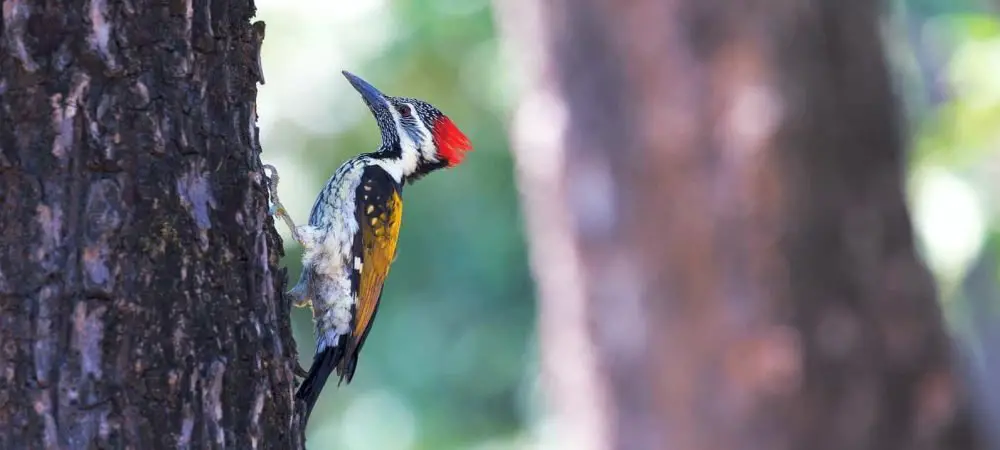
Want to learn more? Take a look at the North American Guide to Woodpeckers
Most of these woodpeckers are year-round residents in the state of Georgia. But let’s have a look at each of these individual species of woodpeckers in more detail.
Georgia is a southern state in America with mild winters and long hot summers, due to its subtropical climate.
There are 63 state parks across Georgia and 12 national parks across the state.
Many of these parks are homes to the woodpeckers that reside in Georgia and have become popular bird-watching spots as a result.
Take a look at our article on How to Attract Woodpeckers?
What Woodpeckers can be seen in Georgia?
Table of Contents
1. Red-bellied Woodpecker
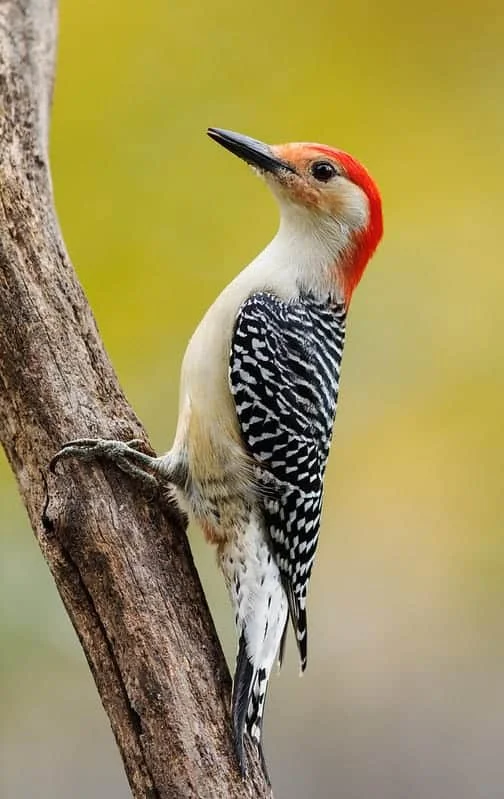
Wingspan
15-18 inches
Weight
2.65 ounces
Life Expectancy
12 years
Diet
Insects
These woodpeckers actually only have pale red feathers on their bellies and the red feathers on their heads are much brighter.
Black and white feathers form striping patterns down this woodpecker’s back.
These birds will happily make their nest in both dense and sub-wooded woodland areas.
Males will pick a site for the nest and begin to excavate it early on in the breeding season, their nests are usually in dead trees and trunks.
Males will tap on the tree trunks from inside of the cavity to attract a female and if the female is interested, she will tap back to the male, this is the first step in courting.
They will make their nests in the same tree year after year but will often use a different cavity, they lay about 2-6 eggs per brood.
These birds are not migratory and therefore can be seen in the state of Georgia throughout all seasons of the year.
They can also be seen in all regions of the state, but the most common areas for recorded sightings are in the northern half of the state.
2. Downy Woodpecker
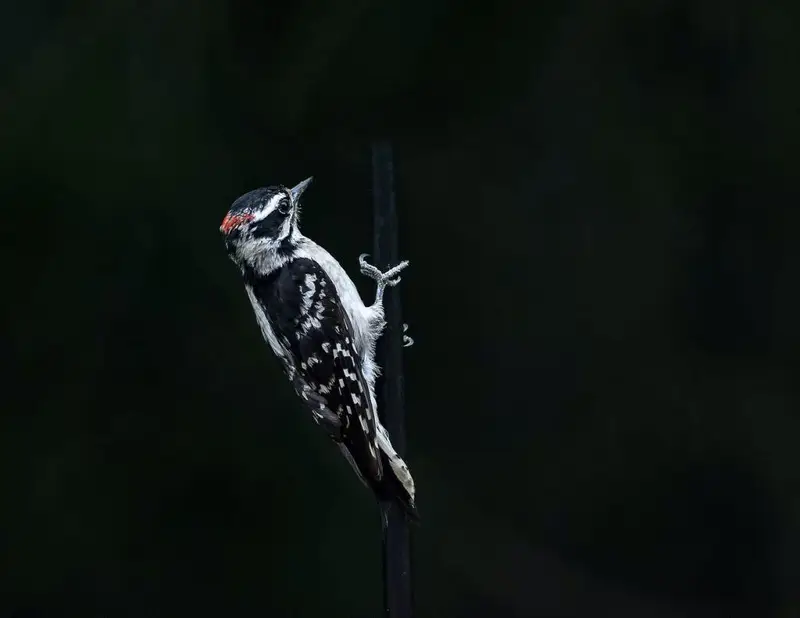
Wingspan
3.27 to 4.13 inches
Weight
0.75 to 1 ounce
Life Expectancy
12 Years
Diet
Insects & Non-insect arthropods
These small woodpeckers have a tiny patch of red on the back of their heads, their bellies are pale, and they have dark wings and backs.
You will usually find this woodpecker in open woodland areas, often close to streams or rivers.
Males will try to attract females by flying between trees and fluttering their wings to look almost like a butterfly, they do this in the early spring months at the start of the breeding season.
The breeding pairs nest together and will nest in either fully dead trees or in the dead parts of living trees.
You can see these woodpeckers in all areas of Georgia and throughout the whole year.
They are most active during their breeding seasons and these birds have been most commonly sighted in the northeast of the state.
3. Red-cockaded Woodpecker
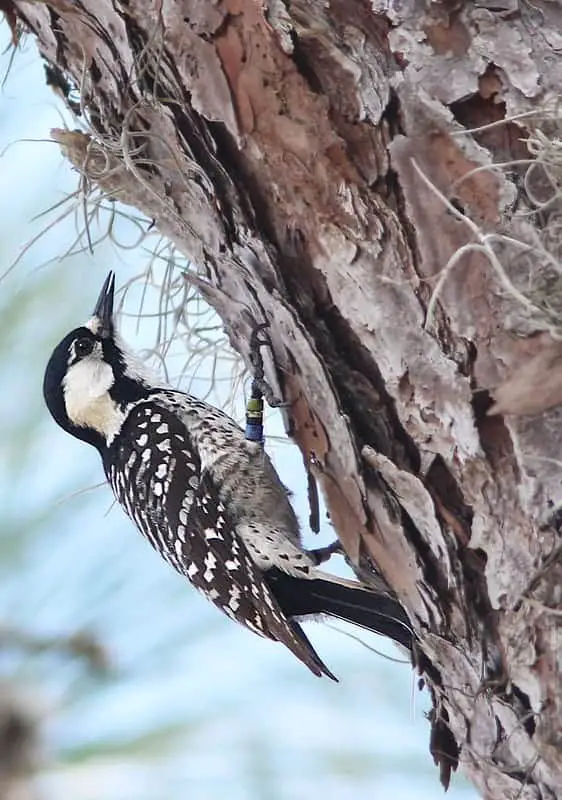
Wingspan
14 inches
Weight
1.5 ounces
Life Expectancy
16 years
Diet
Eggs, insects, nuts, seeds & fruit
These birds are covered almost completely in black and white feathers, despite what their name may suggest.
It is only the males that have any red on them and the small patch of red is barely visible.
They prefer to make their nests in open woodland areas, they will usually do so in pine forests if they can.
Rather than being solitary like lots of woodpeckers, these birds live in small families of two to five, but there is only one female per family.
There is one breeding pair in the group and they remain monogamous and mate for life.
The other males help protect and defend their territories and the female.
Georgia is one of the only states in which this bird can be seen.
They are year-round residents, and their range extends mostly across the central and southern regions of the state.
They have most often been seen in the southwest of Georgia.
4. Hairy Woodpecker
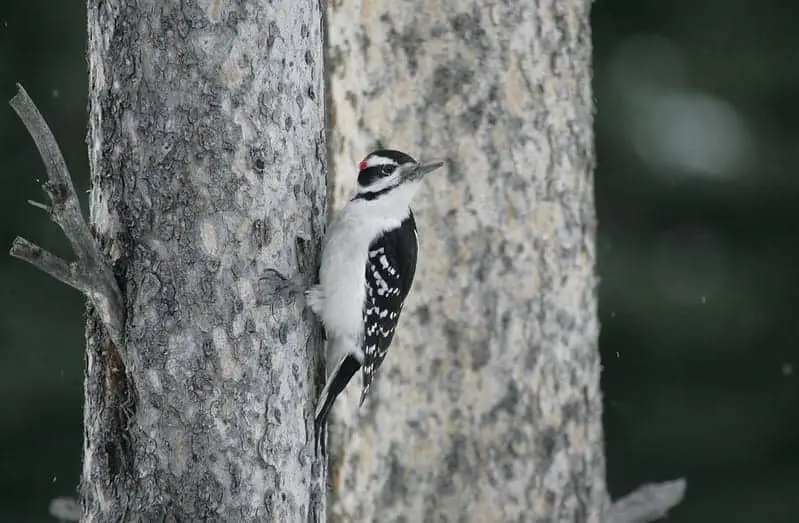
Wingspan
15 inches
Weight
1.4 to 3.4 ounces
Life Expectancy
15 years
Diet
Wood-boring insects & tree sap
These woodpeckers have a unique little orangey-red patch of feathers on top of their head and they are medium in size for a woodpecker.
They also have pale bellies and dark wings and backs. These birds will hollow out a new cavity each year for their nests, which is a common practice for woodpeckers.
They like to nest in woodland areas and their broods consist of 3-6 eggs, they only have one brood per year.
As well as their courtship display, males have an aggressive display which they do to other males.
They raise their wings over their back and make a shrill cry to warn other individuals that conflict may ensue.
They also have a unique courtship display for the females, but this and their other breeding behaviors have not been well studied.
As with most of the other woodpeckers on this list, these birds are permanent residents of Georgia and can be seen in all areas of the state.
They are most commonly seen in the northwest of the state.
5. Pileated Woodpecker
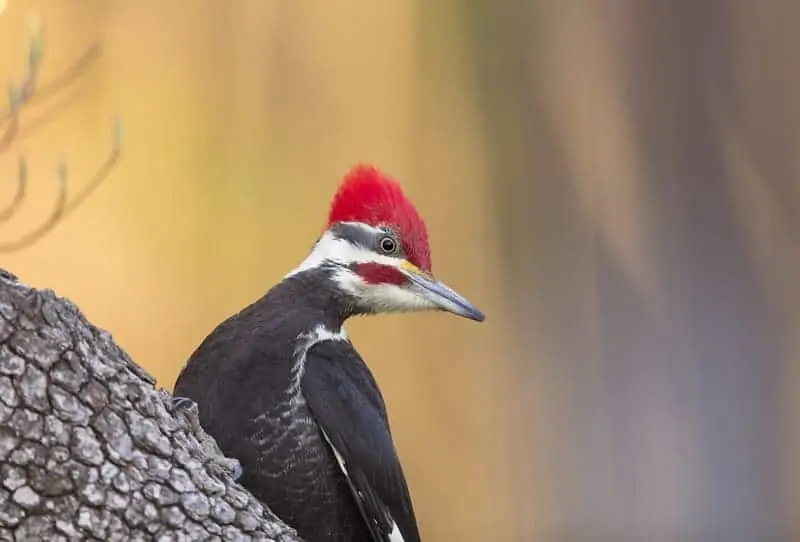
Wingspan
26 to 30 inches
Weight
8.8 to 14.1 ounces
Life Expectancy
13 years
Diet
Fruit, nuts & insects
These woodpeckers have a prominent display of red feather on top of their heads and have bright white feathers on their necks.
The rest of their bodies are covered in dark black feathers.
These birds make their nests in coniferous and mature areas of woodlands, and they are large for a woodpecker.
Their make their cavities in dead trees and trunks and make them rectangular in shape, which is not common for woodpeckers.
These birds remain monogamous and often breed for life, they only mate with another individual once their mate dies and will not allow them in their territory beforehand.
This means that there are a lot of Pileated Woodpeckers that do not have their own territory and have to wait to take a deceased’s place.
Pileated woodpeckers do not have the largest range, but they can still be seen in all regions of Georgia throughout the year.
They have been most commonly recorded in the southwest of the state.
6. Yellow-bellied Sapsucker
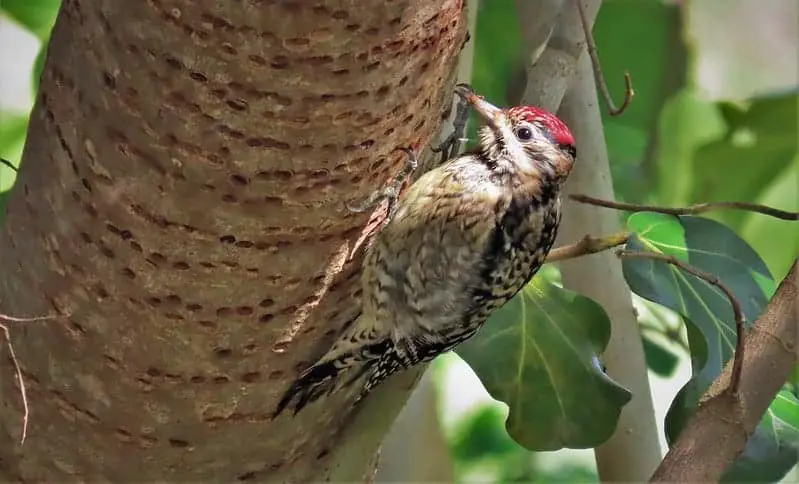
Wingspan
13 to 16 inches
Weight
1.5 to 1.9 ounces
Life Expectancy
7 years
Diet
Tree sap, insects & fruit
Yellow Bellied-Sapsuckers have pale yellow feathers on their bellies which is where they get their names, they also have striking red crowns which helps to identify them.
These birds are small in size for woodpeckers and have a stout bill.
You will often find these sapsuckers nesting in different forests depending on the seasons.
The Yellow-bellied Sapsucker’s courting displays and aggressive displays appear to be very similar to one another.
The biggest difference is that aggressive displays are done to members of the same sex.
These birds will form long term breeding pairs, although a few will find different mates every year. They remain monogamous throughout the breeding season.
These birds are migratory so, whilst they can be seen in all areas of the state, they are only present in Georgia outside of their breeding seasons.
Sightings of this bird are very common and most appear to be recorded in the northeast of the state.
7. Northern Flicker
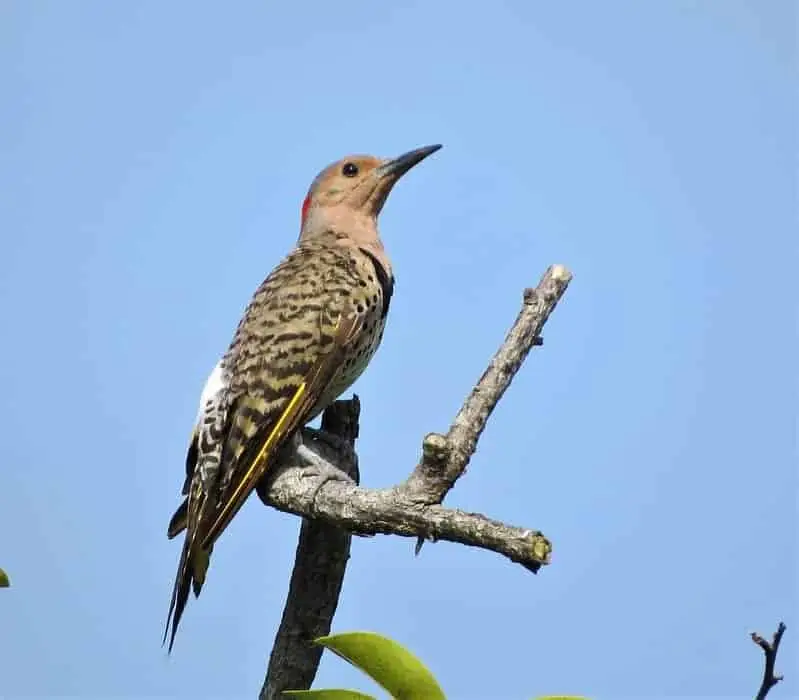
Wingspan
21.3 inches
Weight
6 ounces
Life Expectancy
9 Years
Diet
Insects, seeds, nuts & fruit
These brown feathered woodpeckers are very large in comparison to other woodpecker species.
They can be identified by their unique pattern of spotted bellies and they have distinct patches of red on their face and their tail.
These birds prefer to mostly stay in more dense wooded areas but have occasionally made their nests in more suburban areas.
These birds spend most of their time foraging for food on the ground, which is not a common practice for woodpeckers.
Two males will sometimes compete in what is called a ‘fencing duel’ and they will do this display whilst emitting a call that sounds like wicka.
They will do this display in the presence of a female to try and get her to mate.
These birds will reuse the cavities that they have excavated in previous years, although it is not known whether they return to the same mate every year.
The Northern Flicker can be seen across all 50 states including all areas of Georgia.
They are permanent residents of the state and have most commonly been seen in the northern half of the state.
8. Red-headed Woodpecker
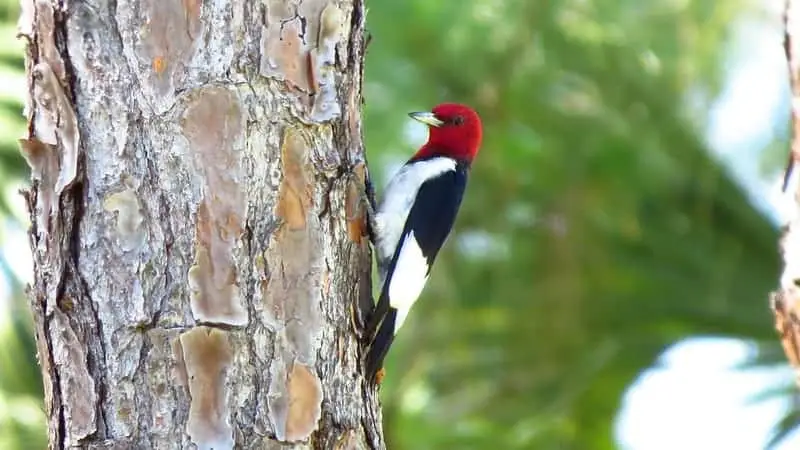
Wingspan
16 inches
Weight
2.5 ounces
Life Expectancy
9 Years
Diet
Insects & Berries
The Red-Headed Woodpecker’s most identifiable feature is, unsurprisingly, it’s bright red head.
The rest of this bird’s body is covered in both white and grey feathers. These birds are medium sized for a woodpecker and most often make their nests in dense woodland areas.
Breeding pairs will play a game of hide and seek with one another; they will play this around tree stumps at the beginning of the breeding season.
These pairs do not interact with each other outside of the breeding season, but they will often stay together for several years.
They are predated upon by a lot of different species including raccoons and Peregrine falcons.
To help defend themselves and their nests, both individuals of the breeding pair will help to deter predators.
These birds can be seen in all areas of Georgia. They are also permanent residents so can be seen during both breeding and wintering seasons.
They are very common in Georgia, most sightings have been recorded in the eastern half of the state.

More Articles.
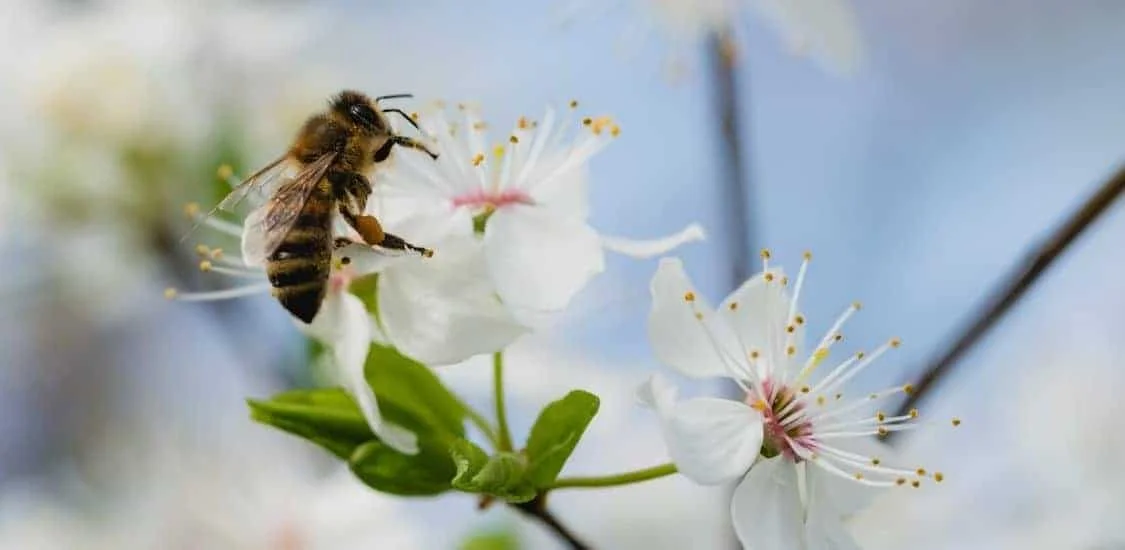
How to Attract Bees to Your Yard?
Bees play a vital role in the environment, helping to spread the pollen of flowers
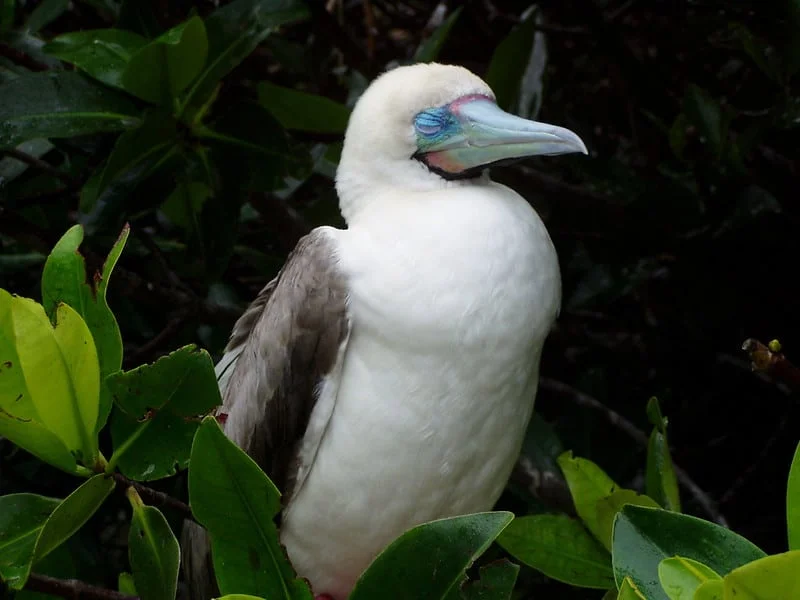
North American Birds with a White Breast (18 Species with Pictures and Sounds)
Canada and America are filled with many wonderful birds with a white breast – in
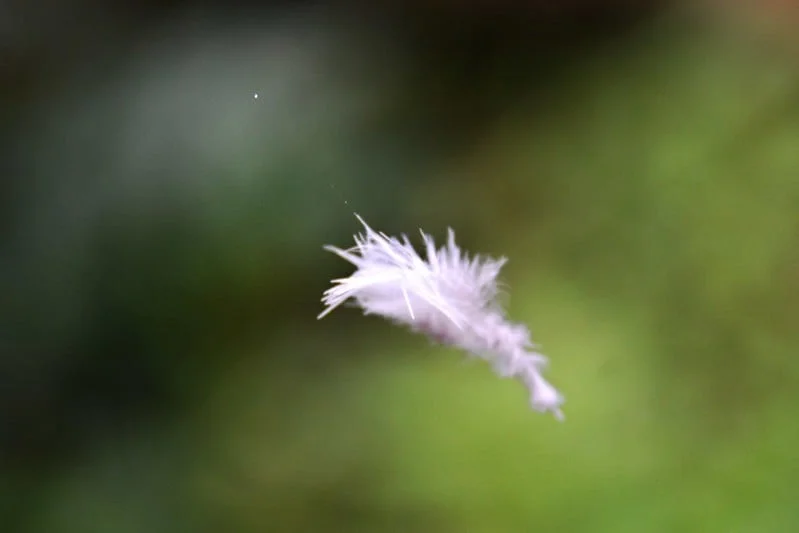
What Does It Mean To See a White Feather Fall in your Dreams? (Symbolism and Meaning)
In some cultures, seeing a white feather fall in your dream is a sign of

About Us
We are avid bird-watchers who recently retired, allowing us more time to travel the world. Fortunately, we have managed to visit numerous countries around Europe, Asia, and America. Watching and photographing birds has been a passion for many years and we are making the most of the extra time on our hands!
